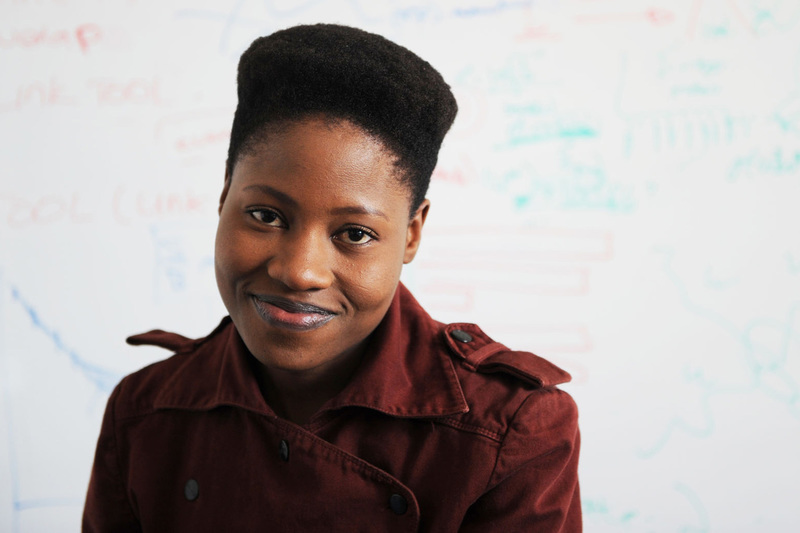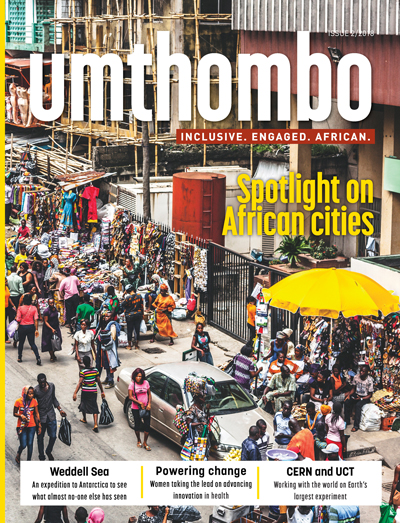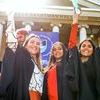From particle physics to biomedical innovation
16 November 2018 | Story Nadia Krige. Photo Michael Hammond. Read time 4 min.
Growing up in rural KwaZulu-Natal, South Africa, Xolisile Thusini was an anomaly in her community. While her friends were dreaming of getting married, she had one goal in mind: to continue studying after school.
Shortly after finishing high school in 2008, she set off to enrol in the School of Physics and Electronics at the University of Zululand with little more than money for transport – and determination.
“It’s very inspiring when you see people working together towards a shared goal.”
Ten years and four degrees later, Thusini is in the first year of her PhD in biomedical engineering at UCT, where she hopes to apply her knowledge of maths and physics to practically serve society. Although her academic career is sprinkled with milestones, Thusini cites her time as a summer school student at CERN as one of the most meaningful.
A summer at CERN
Thusini enrolled in a master’s degree in particle physics at UCT during 2015 under supervision of Dr Andrew Hamilton, and later, Dr Sahal Yacoob. As part of her degree, she started working on an experimental physics project in collaboration with CERN.
After applying to the CERN summer school in 2015, Thusini was one of only two South Africans – both from UCT – and five Africans to be included that year. She ended up spending three months at CERN: two attending lectures as part of the summer school and another month thereafter, arranged by Hamilton.
After applying to the CERN summer school in 2015, Thusini was one of only two South Africans – both from UCT – and five Africans to be included that year.
With collaboration being key at CERN, Thusini saw how important teamwork is in the process of innovation and plans to incorporate this skill into her PhD studies.
“It’s very inspiring when you see people working together towards a shared goal,” she says.
From the building blocks of the universe to biomedical innovation
Thusini’s pursuit of biomedical engineering may seem like a stark change in academic direction, but to her it’s merely an extension of what she’s already achieved. During her master’s degree, Thusini had used a mathematical tool to simulate and produce data similar to what results from experiments at CERN.
“Basically, I was using simulation tools to analyse the behaviour of particles in the proton–proton collisions that happen in the Large Hadron Collider, and I started to wonder if there was a way I could use these tools in medical school.”
This idea gave rise to Thusini’s PhD in which she is trying to use the same mathematical principles in a novel way to produce three-dimensional structures from two-dimensional X-ray imagery. “We are trying to figure out how to produce a 3D, patient-specific anatomical structure similar to that produced by a CT scan – if you don’t have access to a CT scanner,” she explains.
 This story was published in the second issue of Umthombo, a magazine featuring research stories from across the University of Cape Town.
This story was published in the second issue of Umthombo, a magazine featuring research stories from across the University of Cape Town. Umthombo is the isiXhosa word for a natural spring of water or fountain. The most notable features of a fountain are its natural occurrence and limitlessness. Umthombo as a name positions the University of Cape Town, and this publication in particular, as a non-depletable well of knowledge.
Read the complete second issue online or subscribe and receive new issues in your inbox every few months.
 This work is licensed under a Creative Commons Attribution-NoDerivatives 4.0 International License.
This work is licensed under a Creative Commons Attribution-NoDerivatives 4.0 International License.
Please view the republishing articles page for more information.
Research & innovation





































